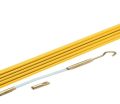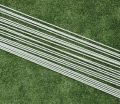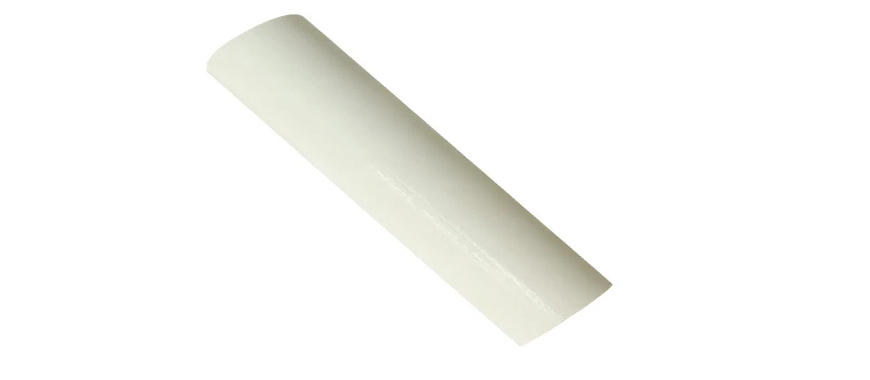
When exploring the best fiberglass rods, it’s essential to understand their unique characteristics and how they enhance the fly fishing experience. Fiberglass rods are known for their exceptional flexibility, providing a smooth casting action that many anglers appreciate. This flexibility helps in effectively fighting fish, absorbing shock during the battle and increasing the chances of a successful catch. Additionally, the weight of the best fiberglass rods allows for prolonged fishing sessions without causing fatigue. Their durability and resistance to breakage make them a reliable choice for both novice and experienced anglers. As a result, the best fiberglass rods continue to hold a significant place in the hearts of those who cherish the art of fly fishing. The best fiberglass rods are tough, flexible, lightweight, and handle various fish species, making them durable and affordable for anglers.
What about Best Fiberglass Rods
The quest for the best fiberglass rods often leads anglers to discover the unique qualities that make these rods a preferred choice for many fishing enthusiasts. Fiberglass rods have gained popularity due to their remarkable characteristics, such as flexibility, durability, and sensitivity. They provide an exceptional balance that enhances the fly fishing experience, especially for those who appreciate the art of casting.
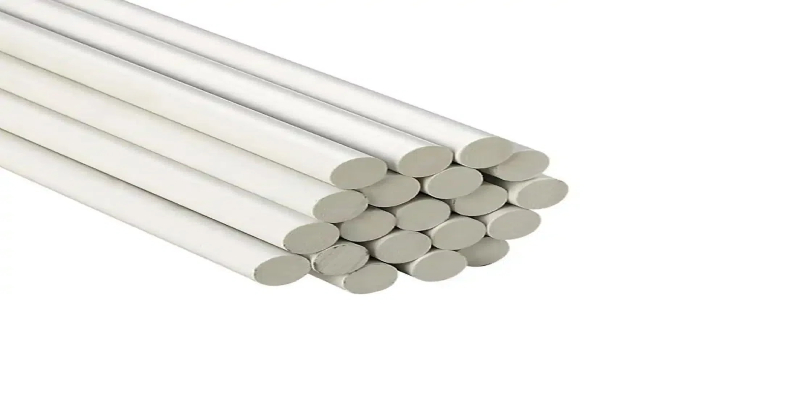
The Key of Flexibility and Action
One standout feature of the best fiberglass rods is their impressive flexibility. This characteristic allows the rod to bend smoothly under load, creating a parabolic action that can absorb sudden movements from a hooked fish. The forgiving nature of these rods makes them especially suitable for beginners, as they reduce the risk of breaking the line or losing fish during the fight. The flexibility also aids in casting, allowing for longer, more controlled presentations.
How About Sensitivity?
Sensitivity is another crucial aspect that defines the best fiberglass rods. The construction of fiberglass materials allows anglers to feel even the slightest nibbles and bites. This heightened sensitivity enables a better response when setting the hook, which can significantly improve catch rates. Whether fishing in still waters or fast-moving streams, the best fiberglass rods enhance the connection between the angler and the fish.
What Are Durability and Resistance to Breakage?
Durability is a hallmark of fiberglass rods. Unlike other materials, fiberglass is inherently resistant to breakage, making it an excellent choice for various fishing environments. The best fiberglass rods, such as the fiberglass soil probe rod, can withstand rough handling, making them ideal for anglers who often venture into rugged terrain or professionals conducting soil sampling. This resilience ensures that the investment in a fiberglass rod, including the fiberglass soil probe rod, will last for many fishing seasons, providing peace of mind on the water.
The Key of Lightweight Design
Another reason anglers favor the best fiberglass rods is their lightweight design. The balance between weight and performance is crucial for long days on the water. Lighter rods reduce fatigue, allowing for extended fishing sessions without discomfort. This feature is particularly beneficial when fishing for hours, as it enables anglers to maintain their focus and enjoyment throughout the day.
How About Versatility in Applications?
Versatility is a significant factor when considering the best fiberglass rods. These rods can be used in a variety of fishing situations, from small streams to larger rivers. The flexibility and lightweight design allow for effective casting in different environments, accommodating various fishing techniques. Whether targeting trout in a quiet creek or casting for bass in a pond, the best fiberglass rods provide the adaptability that many anglers seek.
What Are Notable Models and Their Features?
When exploring the best fiberglass rods, several notable models stand out in the market. One example is the GangLong Fiberglass series, known for its craftsmanship and performance. These rods offer a range of lengths and actions, catering to different fishing styles and preferences. Each model is designed with attention to detail, ensuring that anglers can find a rod that matches their specific needs, whether they are fly fishing or using spinning gear.
The Key of Aesthetic Appeal
The aesthetic appeal of fiberglass rods cannot be overlooked. Many anglers appreciate the classic look and feel of fiberglass materials, which often evoke a sense of nostalgia. The best fiberglass rods come in various colors and finishes, allowing anglers to choose a rod that resonates with their personal style. This visual aspect adds to the overall fishing experience, making the rods not only functional but also enjoyable to use.
How About the Learning Curve for Beginners?
For those new to fishing, the best fiberglass rods offer a forgiving learning curve. Their flexibility and sensitivity help beginners develop their casting techniques and improve their ability to detect bites. This supportive nature encourages new anglers to practice and build their skills without the fear of frequent failures. As they become more comfortable on the water, beginners can appreciate the unique attributes that fiberglass rods provide.
What Are the Considerations for Choosing a Best Fiberglass Rods
When selecting the best fiberglass rods, several considerations come into play. Anglers should think about the type of fishing they intend to do, the species they are targeting, and their personal preferences. Rod length and action are crucial factors that can influence performance in various conditions. Whether seeking a short rod for tight spaces or a longer one for broader casts, understanding these aspects can enhance the overall fishing experience.
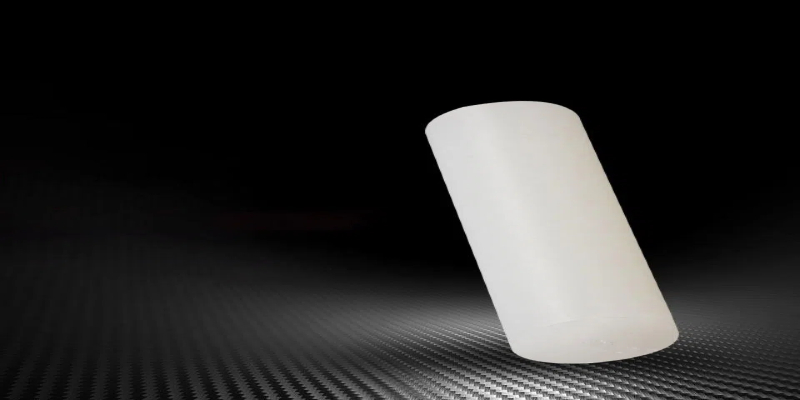
How About Environmental Considerations?
Environmental considerations are increasingly relevant in today’s fishing landscape. Many manufacturers, including GangLong Fiberglass, are adopting eco-friendly practices in their production processes. The use of sustainable fiberglass rods materials and responsible manufacturing methods reflects a commitment to protecting natural resources. Anglers who prioritize sustainability will find that many of the best fiberglass rods align with their values, making them a responsible choice for the environment.
The Key of Long-Term Investment
Investing in the best fiberglass rods can yield long-term benefits. With their durability and performance characteristics, these rods can provide years of enjoyable fishing experiences. For anglers who require additional stability or grip during casting, fiberglass gripper rods can enhance control and precision, ensuring a better fishing experience. When cared for properly, fiberglass rods can withstand the test of time, making them a valuable addition to any angler’s gear collection. This long-term perspective encourages anglers to view their purchases not just as tools, but as companions on their fishing journeys.
How About the Future of Fiberglass Rods?
The future of fiberglass rods appears bright, with ongoing advancements in materials and design. Innovations are likely to enhance the performance attributes that anglers value, making these rods even more appealing. As manufacturers continue to refine their techniques, the best fiberglass rods will likely offer improved lightweight designs, increased sensitivity, and greater versatility. Anglers can look forward to new options that cater to evolving preferences and fishing styles.
The exploration of the best fiberglass rods reveals a wealth of advantages that appeal to anglers of all skill levels. From their unique flexibility and sensitivity to their durability and lightweight design, these rods offer a range of benefits that enhance the fishing experience. As more anglers discover the value of fiberglass rods, their popularity will continue to grow, solidifying their place in the fishing community. Whether one is a beginner or a seasoned pro, the best fiberglass rods promise to deliver satisfaction on the water.
Key Features of Aluminum Channel for 1 4 Fiberglass Support
Best Fiberglass Rods: Discovering Top Choices for Fly Fishing
Fiberglass fly rods have seen a resurgence in popularity among anglers, thanks to their unique characteristics that enhance the fishing experience. When exploring the best fiberglass rods, it’s essential to understand the various attributes that make these rods a favorite for many. This article delves into the qualities of top fiberglass rods, their specifications, and the ideal fishing scenarios where they excel.
The Appeal of Fiberglass Fly Rods
One of the primary attractions of fiberglass rods is their durability. Unlike graphite, fiberglass is less prone to breaking, which can be a significant advantage in rough conditions or when battling larger fish. This resilience allows anglers to fish with confidence, knowing their equipment can withstand the elements. Additionally, fiberglass rods often provide a more forgiving action, making them suitable for beginners and experienced anglers alike. The soft, parabolic bend allows for smooth casting and can help prevent break-offs when fighting fish.
Best 3wt Fiberglass Fly Rod Options
When considering the best fiberglass rods for lighter applications, particularly the 3-weight models, several options stand out. These rods are ideal for small stream fishing or targeting delicate species, such as panfish and trout. A 3wt fiberglass rod offers the perfect balance of sensitivity and power, making it a versatile tool for various fishing scenarios.
One of the standout choices is the GangLong Fiberglass 3wt rod. This rod is known for its lightweight construction and exceptional responsiveness. Anglers appreciate how it allows for precise casting and a subtle feel when detecting bites. Whether fishing on a small creek or a tranquil lake, this rod can handle a range of fishing techniques, from dry fly presentations to light nymphing.
The Benefits of Customization
For those seeking something truly unique, custom fiberglass rods present an exciting opportunity. Creating a custom rod allows anglers to tailor the specifications of fiberglass rods to their preferences, ensuring a personalized fishing experience. From selecting the rod length to choosing specific components like grips, guides, and reel seats, customization can enhance both performance and aesthetics.
Custom fiberglass rods often incorporate advanced materials and construction techniques, making them not only beautiful but also functional. The ability to choose the action and taper can significantly impact casting performance. Anglers can work with builders to create a rod that perfectly matches their fishing style and the specific environments they frequent.
Why Choose Fiberglass Over Other Materials?
While graphite rods have their merits, fiberglass offers unique advantages that cannot be overlooked. The best fiberglass hot rod bodies, for example, use fiberglass as the material of choice. The best fiberglass rods provide a softer feel, which can be advantageous for casting lightweight flies. This softer action allows for more delicate presentations, crucial when fishing in clear waters where fish are easily spooked.
Moreover, the weight of fiberglass rods often contributes to a more satisfying casting experience. The slower action of fiberglass rods allows anglers to load the rod properly during the casting stroke, creating a smooth, flowing motion. This can make the experience more enjoyable, especially during extended fishing sessions.
Effective Adhesive Bonding for FRP Pipe Bell and Spigot Joints
Characteristics to Look for in the Best Fiberglass Rods
When selecting from the best fiberglass rods, there are several key characteristics to consider. The action of the rod plays a significant role in its performance. Fiberglass rods typically exhibit slow to medium action, which provides a softer feel during casting and fighting fish. This action can also enhance the sensitivity of the rod, allowing anglers to detect subtle bites.
Rod length is another critical factor. Longer rods can provide better casting distance and help manage line more effectively on larger bodies of water, while shorter rods excel in tight situations, such as small streams or heavily wooded areas. Anglers should consider their typical fishing environment when selecting the appropriate length.
Weight is also an essential consideration. A lighter rod can reduce fatigue during long days on the water, while a heavier rod might offer more power for fighting larger fish. Finding the right balance of weight and performance is crucial for an enjoyable fishing experience.
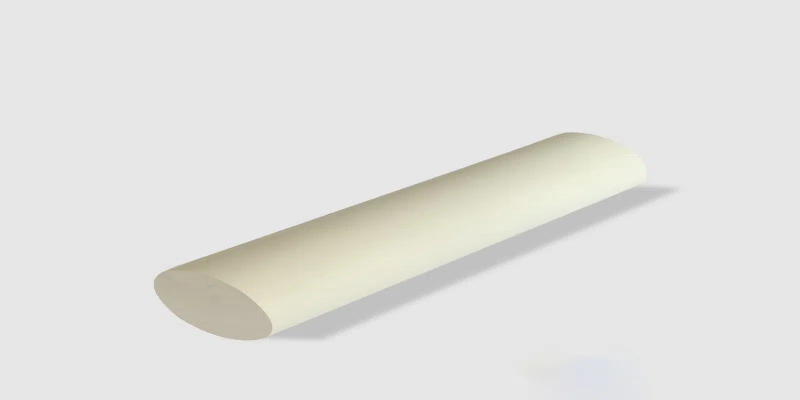
The Taper of Fiberglass Rods
The taper of a rod influences its casting performance and action. The best fiberglass rods come with different tapers, including progressive and parabolic. Progressive tapers provide a consistent bend throughout the rod, making them versatile for various techniques. Parabolic tapers, on the other hand, bend more deeply, which can be beneficial when casting lighter lines and flies.
Choosing the right taper can enhance your fishing technique and improve your overall success on the water. Anglers should consider their casting style and the types of fish they target when selecting a rod with a specific taper.
The Role of Components in Performance
The components of a fiberglass rod significantly influence its performance. High-quality guides, reel seats, and grips can enhance the rod’s functionality and comfort. When selecting the best fiberglass rods, look for features such as ceramic guides that reduce friction and improve line flow, as well as comfortable grips that ensure a solid hold during long casting sessions.
Investing in quality components can lead to a more enjoyable fishing experience. Well-designed guides and reels can also contribute to the overall balance of the rod, improving performance and reducing fatigue.
The Future of Fiberglass Rods
As technology advances, fiberglass rods are continually evolving. The best fiberglass rods now incorporate modern materials and construction techniques that enhance their performance. Anglers can expect to see rods that offer improved sensitivity, lighter weights, and greater durability.
This evolution ensures that fiberglass remains a viable choice for both traditionalists and newcomers to the sport. The ongoing development of materials and designs means that anglers can enjoy the benefits of fiberglass while experiencing the latest innovations in fishing technology.
Tips for Maintaining Your Fiberglass Rod
To ensure the longevity of your fiberglass rod, proper maintenance is essential. After each fishing trip, clean the rod and guides with a soft cloth to remove dirt, salt, and debris. Avoid using harsh chemicals, as they can damage the finish.
Store your fiberglass rod in a protective case to prevent damage during transport. Self storing fiberglass rods are a convenient option, as they can be collapsed or securely stored in a compact form, reducing the risk of damage. Additionally, regularly inspect the rods for any signs of wear, such as cracks or loose guides, as these can significantly affect their performance. It’s also important to check the rod for any signs of wear, such as cracks or loose guides, which could affect its performance.
How Density of FRP Pipe Impacts Performance and Durability
Best Fiberglass Rods: Sizes, Advantages, Disadvantages, and Applications
When choosing the best fiberglass rods, the size of the rod plays a crucial role in its performance and suitability for different fishing scenarios. Fiberglass rods come in various sizes, each tailored to specific fishing needs. In this guide, we’ll explore the different sizes of fiberglass rods, their advantages and disadvantages, and their most common applications. We will also help you determine the ideal size for the best fiberglass rods, ensuring you select the perfect fit for your fishing adventures.
Small Fiberglass Rods (6’ to 7’)
Small fiberglass rods, typically ranging from 6 to 7 feet in length, are ideal for anglers who need precision and maneuverability in smaller fishing environments. These rods are commonly used for trout fishing or casting in tight spots like small streams, rivers, and ponds. They offer a great combination of flexibility and control, allowing anglers to cast with accuracy in challenging conditions.
Advantages:
- Lightweight and easy to handle
- Excellent for precision casting in small areas
- Great for targeting smaller fish species like trout and panfish
Disadvantages:
- May not handle larger fish effectively
- Limited casting distance compared to longer rods
Main Applications:
- Freshwater fishing in small to medium-sized bodies of water
- Perfect for anglers who fish in confined spaces and need accuracy
Medium Fiberglass Rods (7’ to 8’)
Medium-sized fiberglass rods, ranging from 7 to 8 feet, are the most versatile and widely used. They offer a good balance of flexibility, casting distance, and control, making them suitable for a variety of fishing styles, from fly fishing to general angling. These rods are perfect for anglers targeting medium-sized fish like bass, walleye, or even larger trout.
Advantages:
- Versatile and well-suited for a wide range of fishing techniques
- Provides a balance of casting distance and sensitivity
- Handles medium-sized fish well
Disadvantages:
- Less maneuverable than smaller rods
- May not be as precise for short-range casting
Main Applications:
- Ideal for freshwater fishing in lakes and larger rivers
- Suitable for a range of species, including bass and catfish
Large Fiberglass Rods (8’ to 10’ and Beyond)
Large fiberglass rods, typically ranging from 8 to 10 feet or even longer, are designed for anglers who need power and distance in their casts. These rods are ideal for saltwater fishing, surfcasting, or targeting larger species like tuna or sharks. While they offer excellent casting distance and strength, they can be more difficult to handle due to their size and weight.
Advantages:
- Excellent for casting long distances
- Ideal for larger fish species and tough conditions
- Offers greater power and strength for fighting big fish
Disadvantages:
- Heavier and more difficult to control
- Not as sensitive or accurate in tight spaces
Main Applications:
- Saltwater fishing, especially surfcasting
- Targeting large species like tuna, shark, or large saltwater game fish
What Size Should the Best Fiberglass Rods Be?
The ideal size for the best fiberglass rods ultimately depends on the type of fishing you intend to do and the fish species you’re targeting. If you’re an angler looking for versatility and ease of use, a medium-sized fiberglass rod (7’ to 8’) is likely your best option. This size strikes a balance between power, sensitivity, and maneuverability, making it perfect for a wide range of freshwater species and fishing conditions.
For beginners or those who primarily fish in smaller areas, smaller fiberglass rods (6’ to 7’) can be ideal, as they provide more control and precision. On the other hand, if you’re targeting large saltwater species or need maximum casting distance, larger fiberglass rods (8’ and above) are the best choice.
The size of the best fiberglass rods depends on your specific fishing needs, with medium-sized rods offering the most versatility, smaller rods offering precision, and larger rods providing power and distance.
The Best Fiberglass Rods: Versatile Uses Beyond Fishing
While the best fiberglass rods are primarily known for their role in fishing, they possess a wide range of other applications due to their durability, flexibility, and strength. These rods can be adapted for use in various industries, from construction and manufacturing to arts and crafts. In this guide, we’ll explore the diverse uses of fiberglass rods beyond fishing, showcasing their versatility and highlighting how they can be put to work in different fields.
Construction and Industrial Applications
Fiberglass rods are often used in construction and industrial applications due to their strength, lightweight nature, and resistance to corrosion. In these settings, they are typically used as reinforcements in various materials or as components in specialized tools and structures. Their ability to withstand extreme conditions, including high temperatures and chemical exposure, makes them a popular choice for demanding industrial environments.
Specific Uses:
- Reinforcement in composite materials: Fiberglass rods are used as reinforcing elements in construction materials like concrete, plastics, and composite panels. This helps increase the strength and durability of these materials while keeping them lightweight.
- Support structures: They are used in making support beams and other structural components where resistance to environmental factors like rust or corrosion is essential.
Sporting Equipment and Recreation
In addition to fishing, the best fiberglass rods are commonly used in various types of recreational equipment. Their combination of flexibility and durability makes them well-suited for applications where both strength and lightweight properties are needed. These qualities are particularly useful in sports where equipment needs to bend and absorb force without breaking.
Specific Uses:
- Archery: Fiberglass rods are often used to create durable and flexible bows and arrows. The rods’ strength and elasticity make them ideal for creating lightweight yet powerful archery gear.
- Tennis rackets and golf clubs: Some tennis rackets and golf clubs incorporate fiberglass rods in their construction, using the material to create lightweight, resilient frames that provide excellent performance.
DIY and Crafting Projects
The best fiberglass rods are a popular choice for DIY enthusiasts and crafters, thanks to their versatility and ease of customization. They are often used in building everything from homemade fishing rods to creative art installations and practical tools. The flexibility and ability to easily cut, bend, or shape fiberglass make it an excellent material for hands-on projects.
Specific Uses:
- DIY fishing rods: Fiberglass rods are commonly repurposed for personal, home-made fishing rods. Hobbyists and anglers can customize their own rods by adding handles, reels, and guides.
- Art projects: Artists sometimes incorporate fiberglass rods in sculptures and other art pieces. The rods can be bent, twisted, and shaped to form intricate designs or used as supports for larger installations.
- Model making: Fiberglass rods are used in the creation of scale models, where their lightweight yet strong structure helps create durable frameworks for buildings, vehicles, and other items.
Electrical and Telecommunications Applications
Fiberglass rods are also used in the electrical and telecommunications industries. Their non-conductive properties, combined with their lightweight and durable characteristics, make them suitable for applications that require insulation and strength.
Specific Uses:
- Utility poles: Fiberglass rods can be used in the construction of utility poles and supports for power lines and telecommunications cables. The rods’ strength and resistance to environmental wear make them ideal for outdoor use.
- Rodent and pest control lines: In telecommunications, fiberglass rods are used as guides for running cables through hard-to-reach spaces, offering a non-conductive solution for maneuvering wires safely.
Marine and Aerospace Uses
The combination of strength, flexibility, and corrosion resistance makes fiberglass rods ideal for marine and aerospace applications. In these fields, the rods are often used for components that require durability and resistance to harsh conditions such as saltwater exposure or high-speed wind forces.
Specific Uses:
- Boat masts and poles: Fiberglass rods are widely used to create lightweight and durable masts and poles for sailing and other watercraft. The rods’ flexibility allows them to bend without breaking under wind pressure.
- Aircraft components: In aerospace, fiberglass rods are used for lightweight structural components, such as antennas and rods that need to withstand the forces of flight while keeping weight to a minimum.
The best fiberglass rods are far more versatile than just fishing gear. From construction and industrial applications to sporting equipment and arts, their strength, flexibility, and lightweight nature make them invaluable in many industries. Whether reinforcing building materials, crafting DIY projects, or constructing utility poles, fiberglass rods prove to be durable and adaptable, offering practical solutions in various fields. This wide range of applications highlights the true versatility of fiberglass rods, making them indispensable for more than just fishing.
FAQs about Best Fiberglass Rods
Yes, fiberglass rods are highly regarded by many anglers for several reasons. They offer excellent durability and flexibility, which makes them ideal for a variety of fishing conditions. Unlike graphite rods, fiberglass rods can withstand rough handling and are less likely to break, making them a reliable choice for both beginners and experienced anglers. They also provide a smooth and forgiving action, allowing for easier casting and better control during fights with fish. Many anglers appreciate the soft feel of fiberglass, which enhances the overall fishing experience. Additionally, fiberglass rods are often more affordable than their graphite counterparts, making them a popular choice for those looking for quality without breaking the bank. Overall, fiberglass rods can be a fantastic option for anglers seeking a versatile and resilient fishing tool.
Fiberglass fly rods are particularly well-suited for specific fishing situations and styles. They excel in short to medium-range casting, making them ideal for small streams and delicate presentations. Their slower action allows for precise control over the fly, which is beneficial when targeting wary fish. Additionally, fiberglass rods provide a soft tip, which helps in preventing line breakage and improving catch rates when using lighter tippets. Many anglers find them enjoyable for roll casting and presenting larger flies due to their flexibility. Moreover, fiberglass rods are great for beginners who are still learning the nuances of fly fishing, as they tend to be more forgiving with casting mistakes. Overall, fiberglass fly rods are versatile and can enhance the experience of fishing in various environments.
The debate between fiberglass and bamboo rods is largely subjective, as both materials have their unique advantages. Fiberglass rods are known for their durability and affordability, making them a practical choice for many anglers. They are resistant to damage and less prone to breakage, which can be a significant advantage during rugged fishing trips. On the other hand, bamboo rods are often celebrated for their traditional craftsmanship, aesthetics, and superior sensitivity. Many anglers appreciate the classic feel and performance of bamboo, particularly in dry fly fishing. However, bamboo rods require more maintenance and can be more expensive. Ultimately, the choice between fiberglass and bamboo will depend on personal preference, fishing style, and budget. Both materials have their dedicated fan bases, and either can be an excellent choice depending on the angler’s needs.
When comparing fiberglass and carbon fiber rods, the decision often comes down to specific fishing needs. Fiberglass rods are generally more flexible and durable, offering a slower action and more forgiving bend, making them ideal for beginners and those who fish in challenging conditions. They tend to be heavier, which some anglers appreciate for added casting control.
Carbon fiber rods, also known as graphite, are lighter and stiffer, offering faster actions that are favored for precision casting and sensitivity, particularly in modern fly fishing. These rods allow for quicker hooksets and are generally more responsive.
Overall, fiberglass rods excel in versatility and durability, making them a solid choice for those looking for a workhorse rod, while carbon fiber rods provide an advantage in performance and sensitivity for more experienced anglers. The best choice depends on your fishing style, preferences, and the type of fishing you’ll be doing.
Fiberglass rods are generally considered stronger than graphite rods, particularly in terms of durability and resistance to breaking. Fiberglass is more flexible and can bend more without breaking, making it a great choice for anglers who need a rod that can withstand rough handling or strong fish. This increased flexibility also helps absorb shocks during the fight, reducing the likelihood of snapping under pressure.
Graphite (or carbon fiber) rods, while lighter and more sensitive, can be more prone to breaking if over-stressed, especially when subjected to heavy loads or extreme conditions. However, graphite’s higher stiffness allows for better precision and faster action, making it ideal for more experienced anglers who value responsiveness over durability.
In summary, fiberglass rods are stronger in terms of durability and flexibility, while graphite rods are more sensitive but can be more fragile under extreme conditions.
Fiberglass fly rods are known for their smooth action and excellent durability. One of the key advantages is their slower action, which gives anglers more control over the line and helps in making delicate presentations, especially when fishing with smaller flies. This forgiving action is ideal for beginners or anglers who prefer a relaxed casting style.
Fiberglass rods are also highly durable and resistant to breakage, even under rough conditions, making them a great choice for anglers who fish in tough environments or do a lot of traveling. Their flexibility helps absorb sudden shocks from fighting fish, which reduces the risk of damage. Additionally, fiberglass rods are often more affordable than high-end graphite models, offering great value for anglers who want quality without breaking the bank.
Overall, fiberglass fly rods combine durability, smooth action, and great versatility, making them a solid choice for a wide range of anglers.
Fiberglass rods can make fishing easier in several ways, especially for beginners or those who prefer a more relaxed and forgiving fishing experience. Their slow action and inherent flexibility help absorb shock during casting and when fighting fish, reducing the risk of breaking the rod. This makes them less intimidating for novice anglers who might struggle with faster, stiffer rods.
Fiberglass rods are also easier to control during casting, as their slower action provides more time to adjust and fine-tune your technique. The added forgiveness helps with accuracy, and they can handle a wider range of fishing conditions, from smaller streams to larger bodies of water.
While advanced anglers might prefer a faster, more responsive graphite rod, fiberglass rods certainly make fishing easier for many, especially those looking for a forgiving, durable, and versatile tool to get the job done.
Yes, you can absolutely use bait on a fiberglass rod! In fact, fiberglass rods are an excellent choice for bait fishing due to their durability, flexibility, and versatility. The forgiving action of fiberglass rods helps absorb the shock when setting the hook, which is particularly useful when fishing with live bait or heavier rigs. Their strength also makes them a good option for targeting larger species that may put up a fight.
Fiberglass rods are commonly used for a variety of bait fishing techniques, including bottom fishing, trolling, and fishing with live or cut bait. They can handle a wide range of weights and tackle, making them an all-around tool for various types of fishing.
So, whether you’re fishing in saltwater or freshwater, fiberglass rods are well-suited for bait fishing, offering the durability and responsiveness needed to handle different setups.
Yes, it’s possible to fix a broken fiberglass fishing rod, though it depends on the severity of the damage. If the rod breaks cleanly, you can often repair it using fiberglass repair kits, which are readily available at most tackle shops. These kits typically include epoxy resin and fiberglass cloth that you can use to bond the broken pieces back together. If the break is minor, such as a small crack, a simple fix with an adhesive or epoxy might be enough.
However, if the break is severe or affects critical areas like the rod’s tip or ferrules, a repair might not restore the rod to its original strength and performance. In some cases, the cost and effort of repair might not be worth it, and it might be more economical to replace the rod.
If you’re unsure, many professional rod repair shops can offer expert advice or handle the repair for you.
The choice between aluminum and fiberglass rods largely depends on what you’re looking for in a fishing experience. Aluminum rods, typically used for the reel seat or other components, are lightweight, corrosion-resistant, and sturdy. They offer durability and are often used in combination with fiberglass or graphite rods for structural strength.
On the other hand, fiberglass fishing rods themselves offer greater flexibility, shock absorption, and durability when compared to aluminum. They are heavier but more resilient, making them ideal for rough environments and extended use. Fiberglass rods also tend to be more forgiving in action, which makes them great for casting and fighting fish with less risk of breaking.
In terms of the rod material itself, fiberglass tends to be the better choice for the overall fishing experience, while aluminum parts are best suited for structural components. Together, they complement each other, but when it comes to the actual rod material, fiberglass is generally superior for most fishing applications.
Yes, some advanced materials surpass carbon fiber in certain properties. Graphene, for example, is stronger and lighter than carbon fiber, with exceptional electrical conductivity and flexibility. Boron fiber, though expensive, is stiffer and stronger than carbon fiber, making it an excellent choice for aerospace and high-performance sporting equipment. Titanium is another alternative with high strength and durability, though it is significantly heavier. Dyneema (ultra-high-molecular-weight polyethylene) offers exceptional toughness and impact resistance, making it useful in bulletproof materials and fishing lines rather than rods. In the fishing industry, some manufacturers experiment with nanocomposite materials and hybrid carbon fiber blends to improve performance further. While carbon fiber remains the dominant material for high-end fishing rods, newer composites may eventually provide even better performance in strength, flexibility, and weight. However, these materials are still costly and less widely available than traditional carbon fiber.
Carbon fiber is generally considered better than fiberglass due to its superior strength-to-weight ratio, stiffness, and sensitivity. It is widely used in high-performance fishing rods, aerospace, and automotive industries. Kevlar is another material that surpasses fiberglass in terms of toughness and impact resistance. It is commonly used in bulletproof vests and some advanced fishing rod applications. Titanium and aluminum alloys also outperform fiberglass in strength and corrosion resistance, though they are heavier and less flexible. For fishing rods, carbon fiber offers greater sensitivity and lightweight performance, making it ideal for fast-action rods. However, fiberglass remains a strong contender due to its durability, flexibility, and affordability. In applications where cost and toughness are the main concerns, fiberglass is still a viable choice. However, for high-end performance and minimal weight, carbon fiber or advanced composites are the superior options.
Carbon fiber is stronger than chromoly steel in terms of tensile strength and weight efficiency. Carbon fiber can have a tensile strength of over 500,000 psi, while chromoly steel typically ranges between 70,000 and 100,000 psi. This means carbon fiber is several times stronger per unit of weight. However, chromoly is superior in toughness and impact resistance. Unlike carbon fiber, which can crack or shatter under extreme stress, chromoly bends and absorbs energy, making it ideal for applications like roll cages, bicycle frames, and aircraft structures. In fishing rods, carbon fiber provides superior stiffness and sensitivity compared to metal alternatives, but chromoly is rarely used in rods due to its weight. If weight reduction and strength are top priorities, carbon fiber is the better choice. However, in applications where durability and impact resistance are critical, chromoly remains a valuable material.
No, carbon fiber is significantly stronger than fiberglass in terms of tensile strength and stiffness. Carbon fiber has a much higher strength-to-weight ratio, making it more rigid and lighter than fiberglass. This makes it the preferred material for high-performance fishing rods, aerospace components, and automotive applications. However, fiberglass has advantages in impact resistance, flexibility, and durability. While carbon fiber can be brittle and prone to snapping under excessive force, fiberglass can absorb shocks better, making it ideal for applications where toughness is essential. For fishing rods, carbon fiber provides greater sensitivity and precision, while fiberglass rods are better for heavy-duty, rugged use. Hybrid rods combining both materials exist, offering the best of both worlds. If sheer strength and lightness are the primary concerns, carbon fiber is superior. However, fiberglass remains a strong, cost-effective choice for anglers needing durability and resilience.
S-glass is the strongest type of fiberglass available, offering superior tensile strength and stiffness compared to traditional E-glass. It is specifically engineered for applications requiring higher performance, such as advanced fishing rods, aerospace components, and boat hulls. S-glass has up to 30% higher strength-to-weight ratio than E-glass, making it more resistant to breakage while maintaining flexibility. This material allows fishing rods to be lighter and more sensitive while still handling large fish and high-pressure conditions. Another strong fiberglass type is T-glass, which is a variation designed for extra toughness and impact resistance. While E-glass is the most common due to its cost-effectiveness, S-glass is preferred for premium fiberglass rods that need enhanced durability without excessive weight. When choosing a fiberglass fishing rod, considering the material’s strength, responsiveness, and weight can help determine the best option for your fishing style.
S-glass and E-glass are both types of fiberglass used in fishing rods, but they have distinct differences in strength, flexibility, and weight. E-glass (electrical-grade glass) is the most commonly used material for fiberglass rods due to its affordability, durability, and moderate strength. It is slightly heavier and less stiff than S-glass, making it ideal for slower-action rods that excel in trolling and crankbait fishing. S-glass (structural-grade glass), on the other hand, is a higher-performance fiberglass with greater tensile strength and stiffness. It produces lighter rods with faster action, providing better sensitivity and power without sacrificing durability. S-glass rods are often used in high-end fishing applications where weight reduction and increased performance are crucial. While E-glass is more forgiving and resilient, S-glass offers a balance between fiberglass durability and graphite-like responsiveness, making it a preferred choice for advanced anglers seeking more refined control.
Joining fiberglass rods requires careful selection of adhesives and connectors to ensure strength and durability. The most effective method is using a fiberglass rod sleeve or ferrule, which allows two sections to fit together securely. Epoxy adhesives, particularly marine-grade or high-strength options, work best for bonding fiberglass rods. To create a strong joint, roughen the surfaces of both rod ends with sandpaper to improve adhesion. Apply a generous amount of epoxy, fit the rods together, and let them cure fully before use. Heat-shrink tubing or fiberglass cloth wrapped around the joint can reinforce the connection. If a mechanical approach is preferred, using threaded inserts or compression fittings can provide a sturdy, removable joint. For fishing rods, spigot or slip joints are commonly used to maintain flexibility while ensuring seamless power transfer. Properly joining fiberglass rods extends their usability in fishing, tent poles, or structural applications.
Yes, fiberglass rods are highly compatible with fishing tackle and are widely used for various fishing applications. They offer excellent durability, flexibility, and shock absorption, making them ideal for handling aggressive fish and heavy loads. Fiberglass rods pair well with various tackle, including spinning reels, baitcasting reels, and fly-fishing setups. Their softer action allows better lure presentation and improves hook-setting efficiency, particularly for crankbaits, swimbaits, and trolling applications. These rods work well with monofilament and braided lines, although adjusting the line strength to the rod’s power rating is essential. Heavier fiberglass rods can accommodate larger lures and heavier weights, while ultralight models work best with finesse baits. Despite being heavier than graphite rods, their toughness and forgiving nature make them a favorite among beginners and experienced anglers alike. For saltwater or freshwater fishing, fiberglass rods offer reliable performance with the right tackle setup.
The best way to cut a fiberglass rod is to use a fine-toothed hacksaw, rotary tool with a cutting wheel, or a diamond blade on a saw. Before cutting, wrap masking tape around the area to minimize splintering. When making the cut, apply steady pressure but avoid excessive force, as fiberglass can be brittle and prone to fraying. It’s also crucial to wear protective gear like gloves, safety glasses, and a dust mask, as fiberglass dust can be hazardous. After cutting, smooth the edges with fine-grit sandpaper to prevent sharp splinters and improve handling. If you need a precise cut with minimal damage, a wet saw or Dremel tool with a reinforced cutting disc works well. For fishing rod modifications, ensure the cut doesn’t compromise the rod’s integrity, as fiberglass rods rely on their full length for optimal strength and flexibility.

As the editor of GangLong Fiberglass, I have years of experience and in-depth research, focusing on cable tray products, fiberglass solutions, and grille systems. I incorporate years of industry insights and practical experience into every content, committed to promoting the progress of the industry. At GangLong Fiberglass, my commitment is reflected in every product, from innovative cable trays to durable fiberglass solutions and sturdy grille systems. As an authoritative voice in the industry, my goal is to provide valuable information to professionals and businesses and promote forward-looking solutions.

